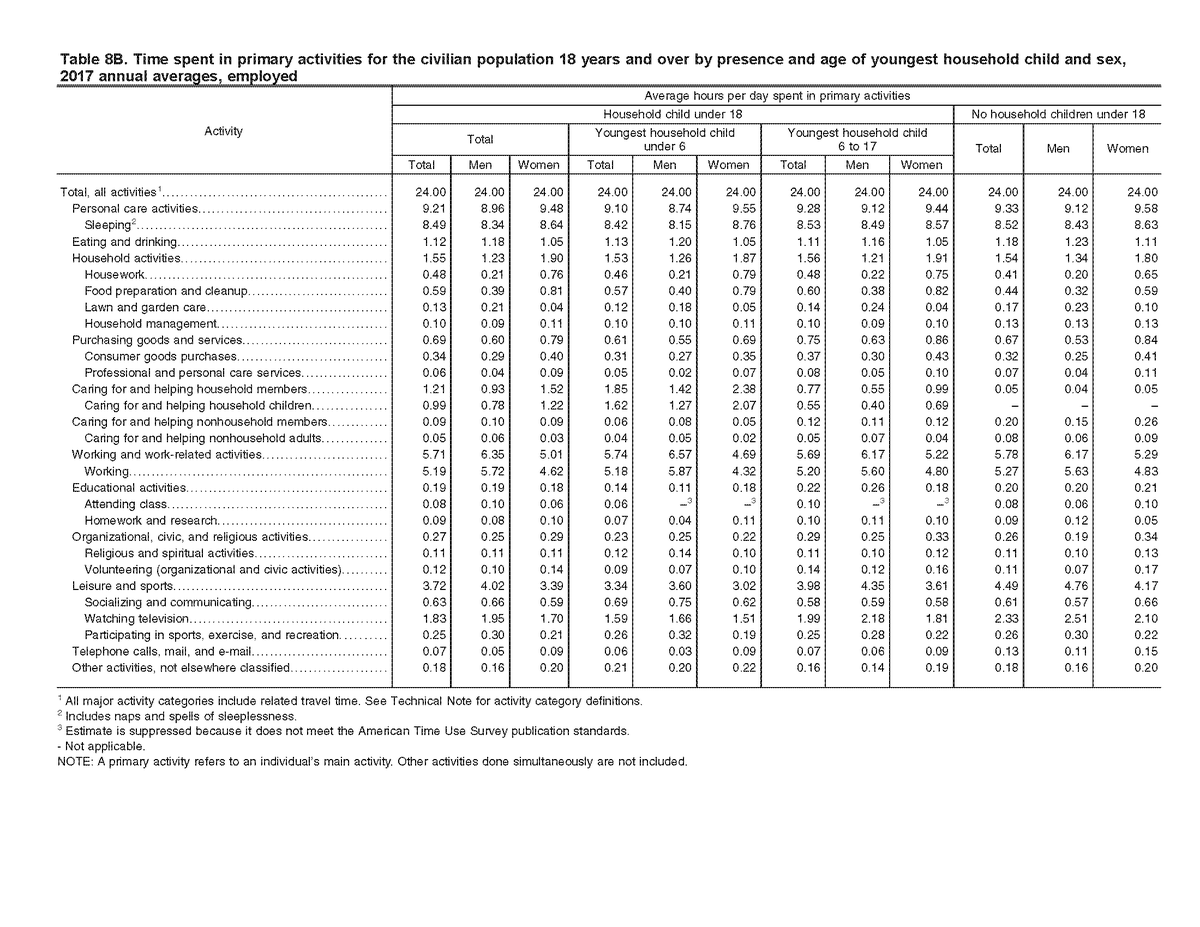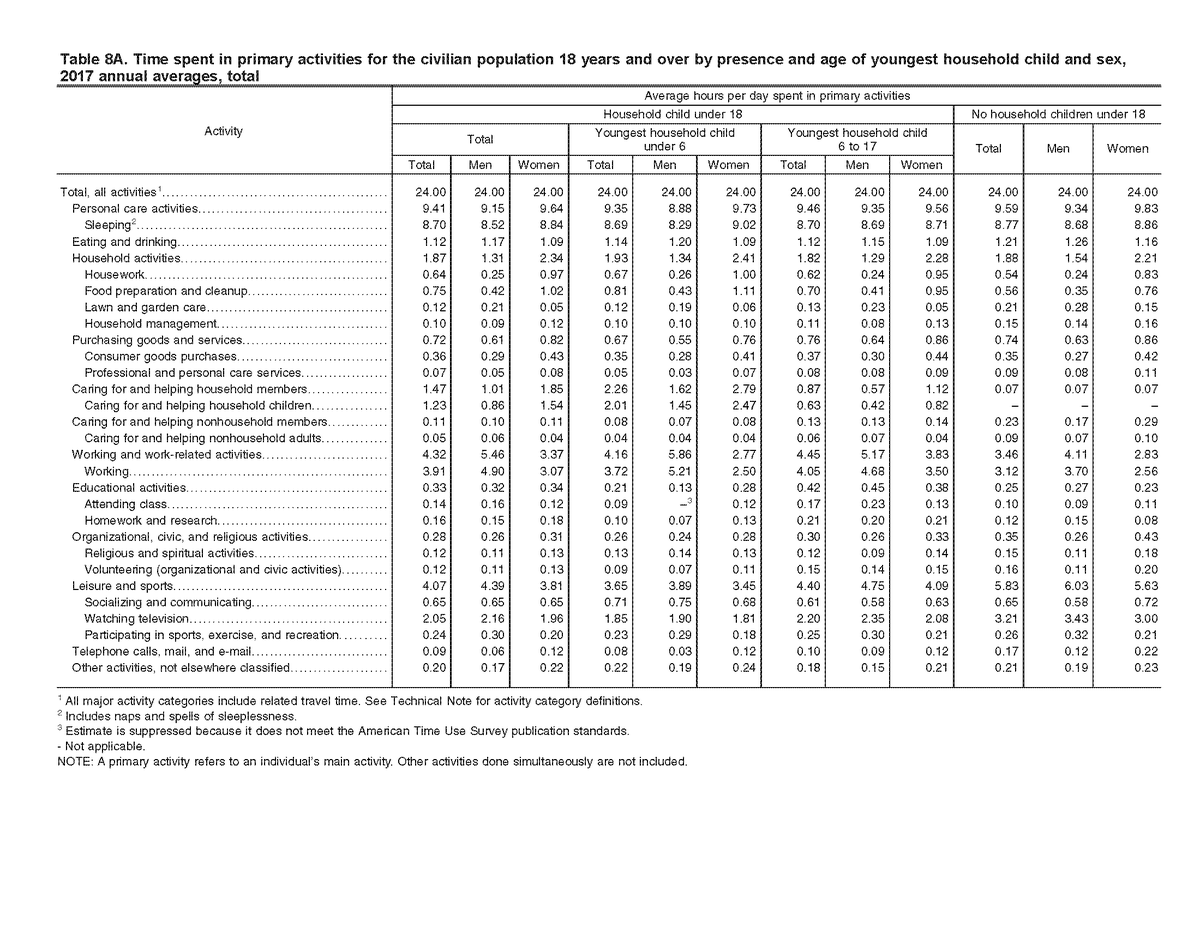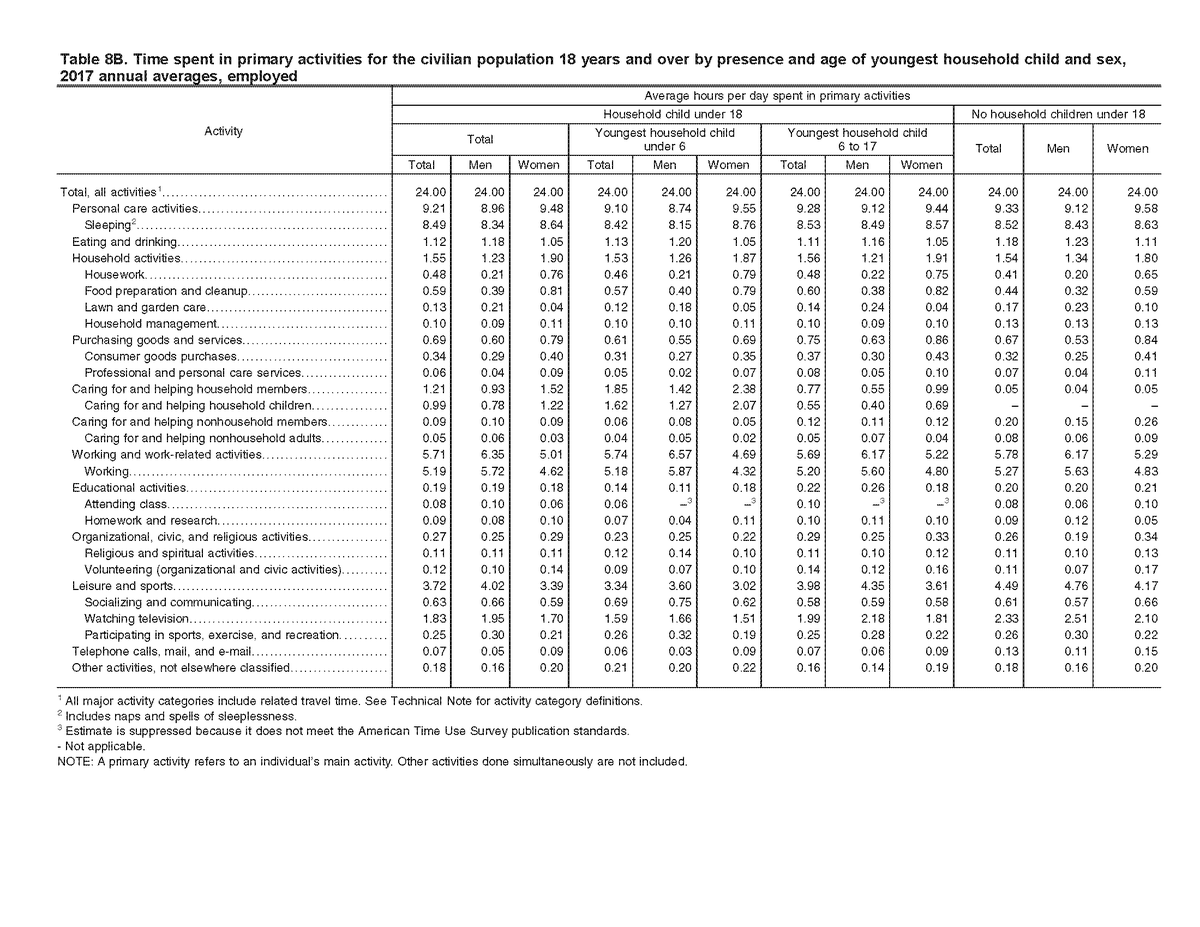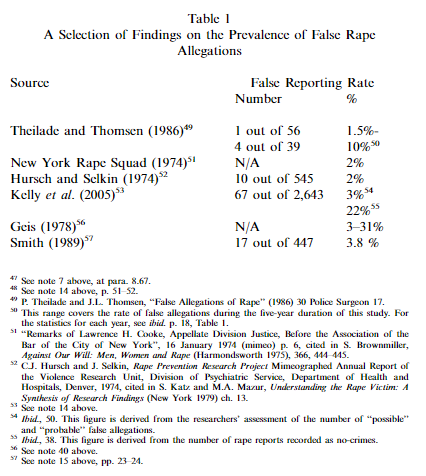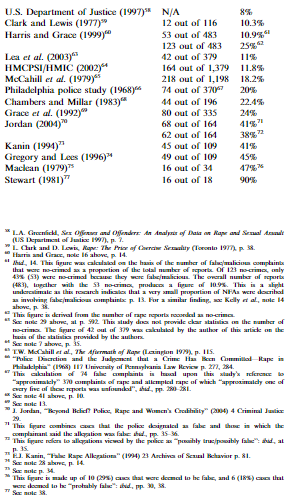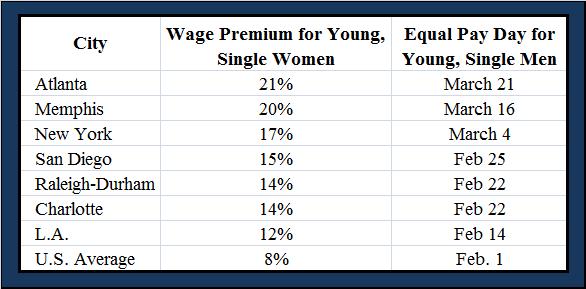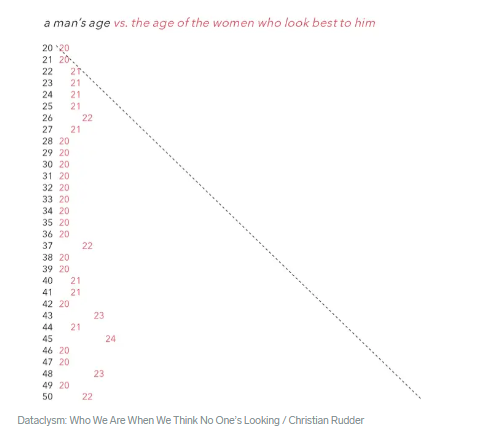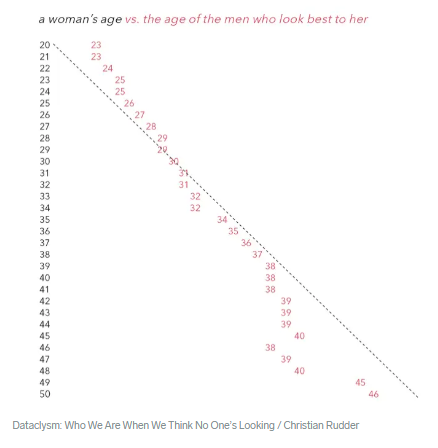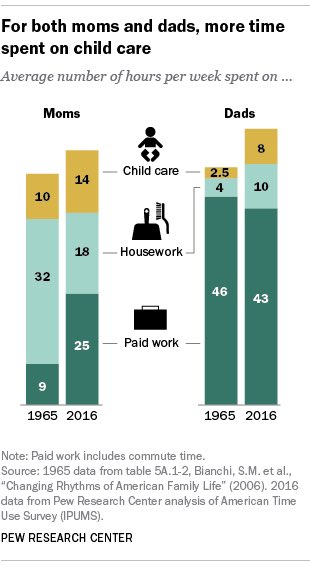
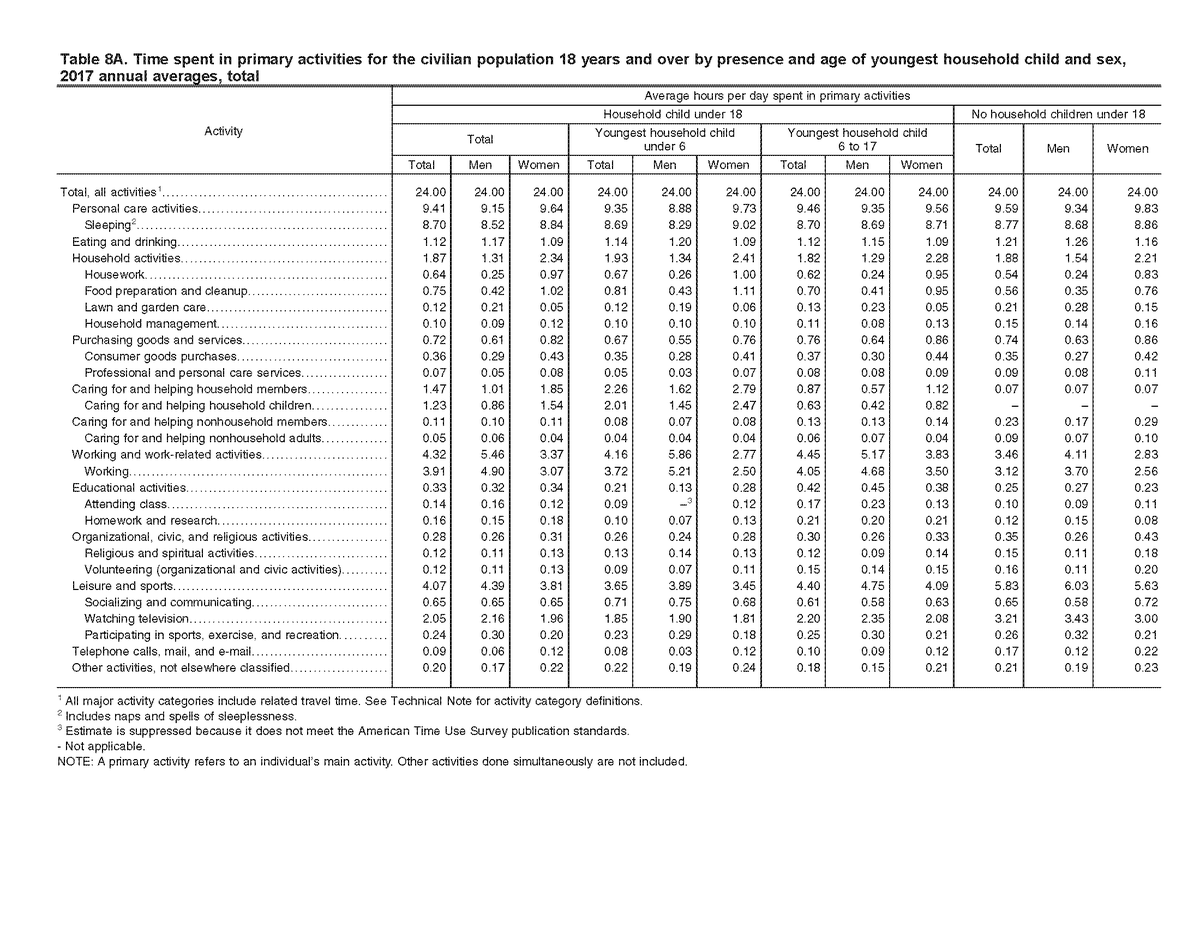

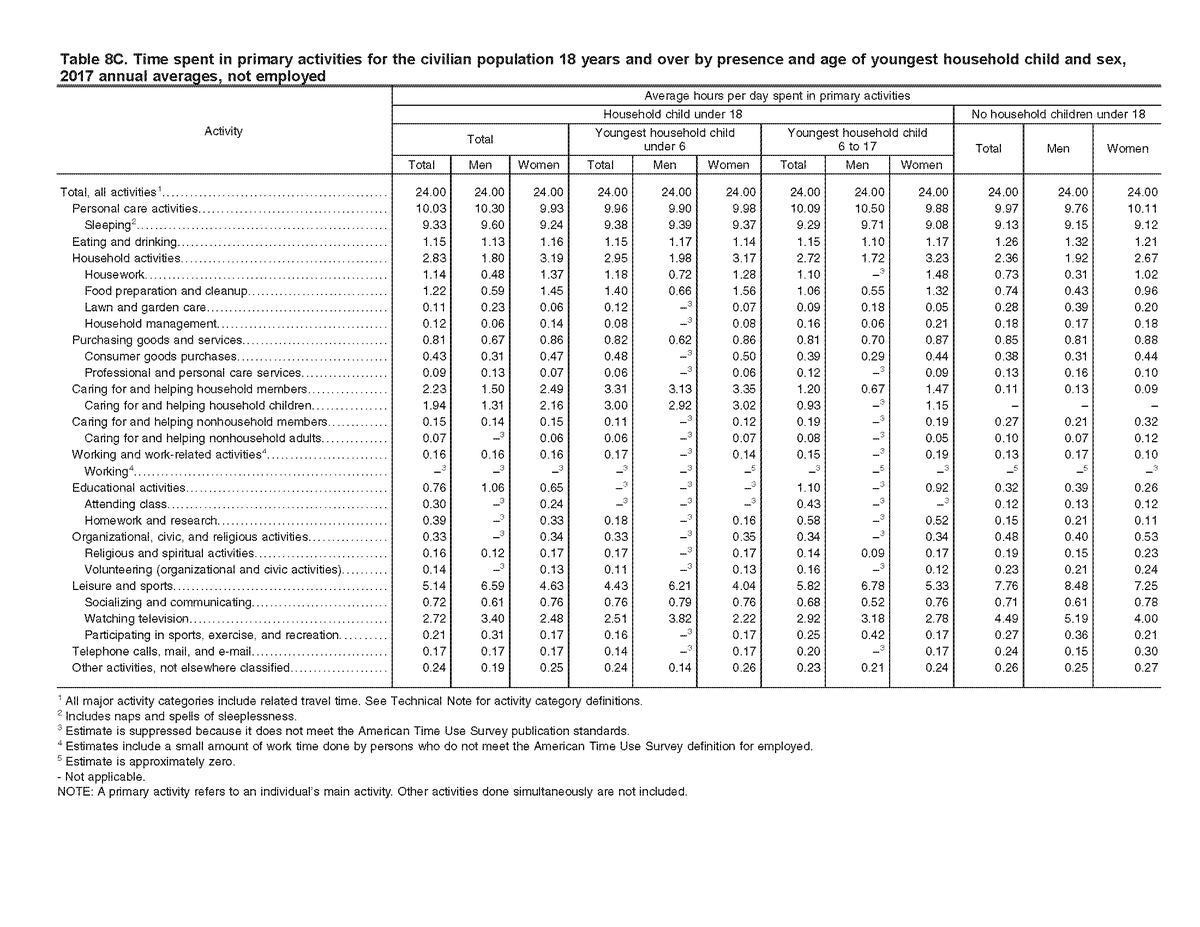
"[O]nce we control only for one variable—hours worked—and compare men and women both working 40-hours per week in 2017, more than one-third of the raw 18.2% pay gap reported by the BLS disappears" (fee.org/articles/a-new…).
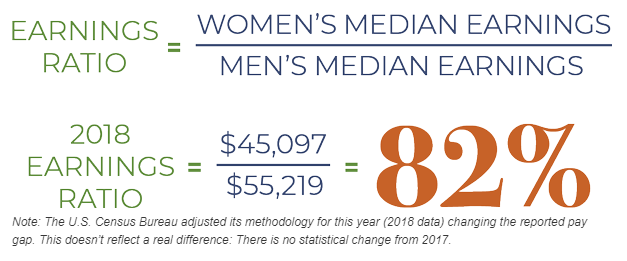
Pursuant to @BLS_gov data in the American Time Use Survey, the average man is getting the equivalent of over 26½ (8-hour) days of experience more than the average woman is getting on the job (bls.gov/news.release/a…, p. 2).
This adds up over time.
Albeit slower, this adds up fast.
On average, men just work more in America (considering both paid and unpaid).

Table 8A, column 1: Men: Women:
Household activities: 1.31 2.34
Caring for household: 1.01 1.85
Work-related activities: 5.46 3.37
==========
Total: 7.78 7.56
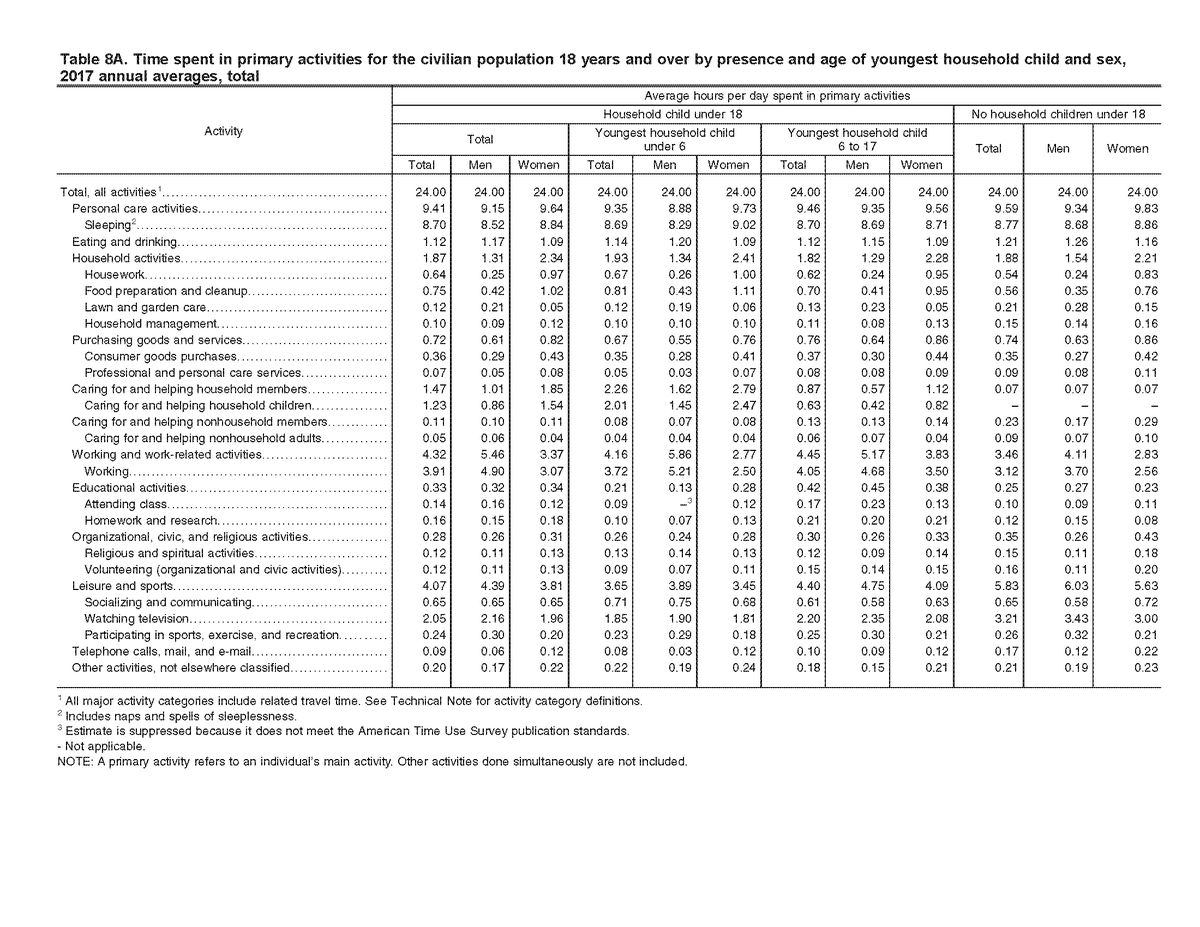
Women care for and help household members 2.08 more hours per day than men in the most extreme case presented by Table 8A, but men work 6.43 hours more per day than women.
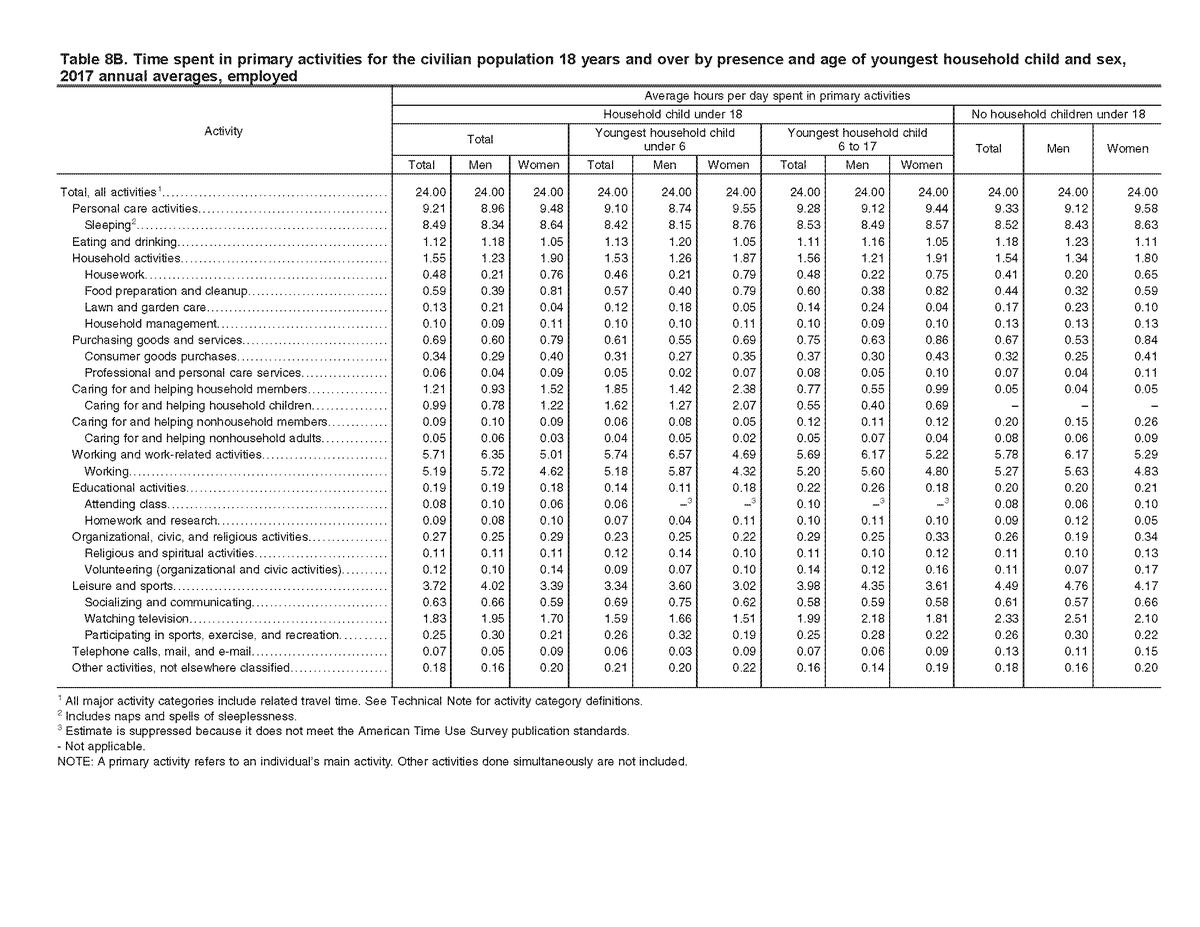
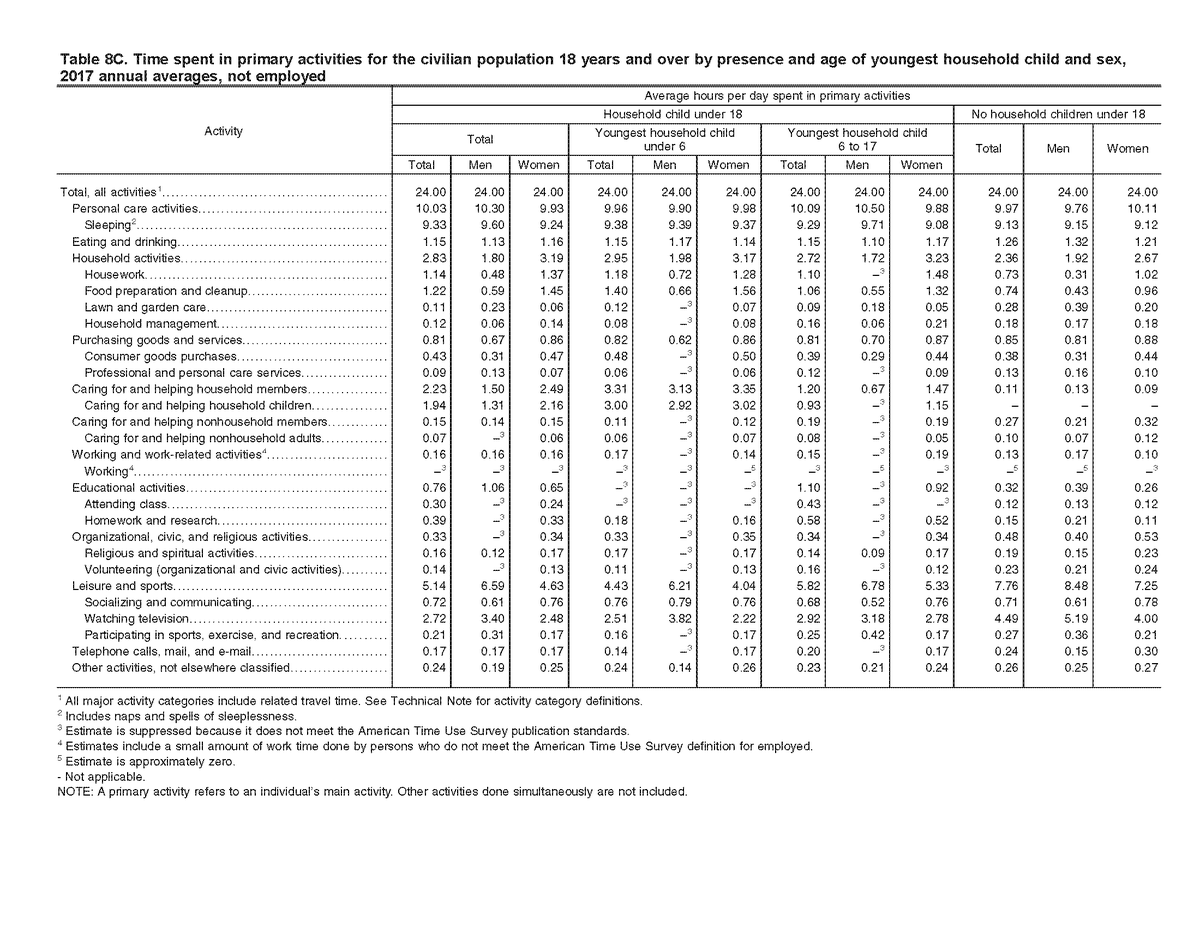
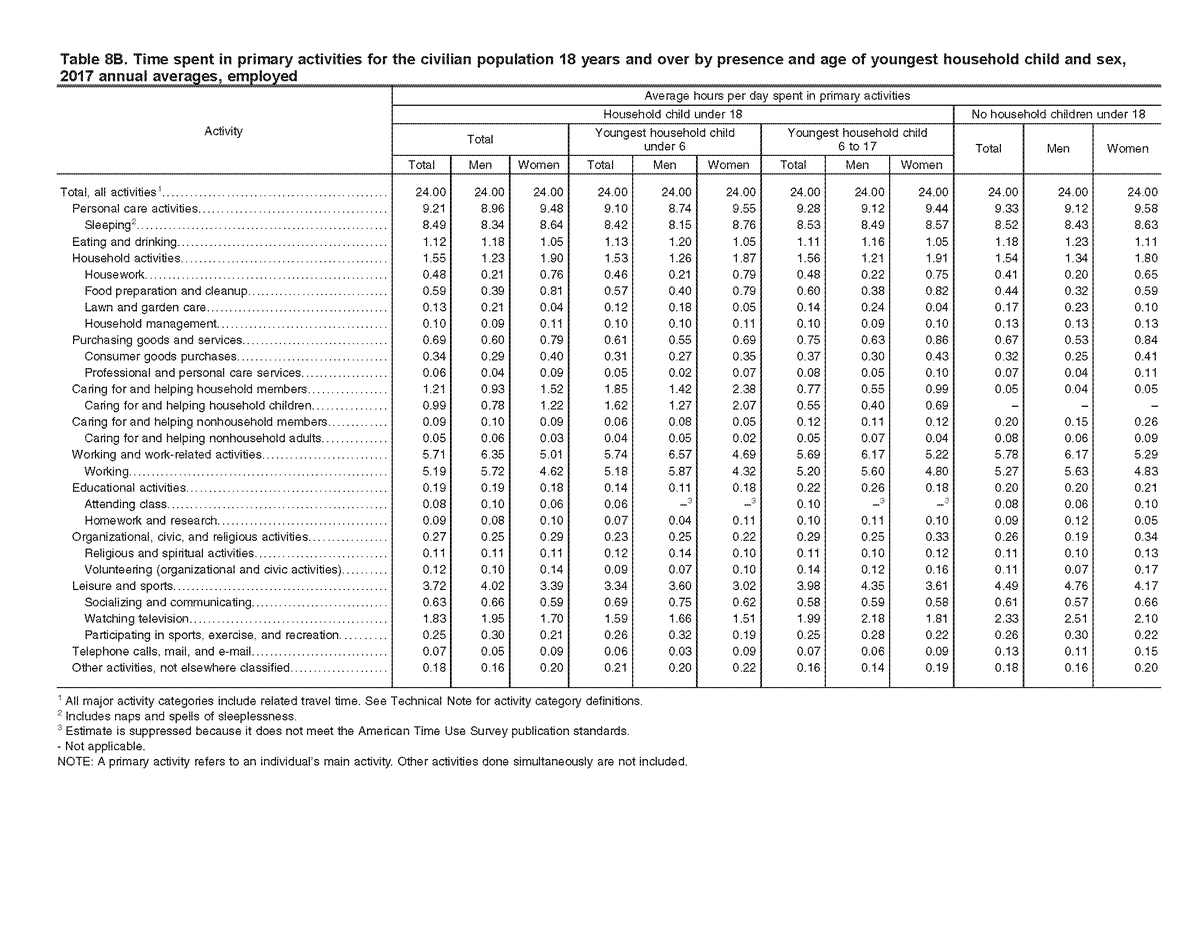
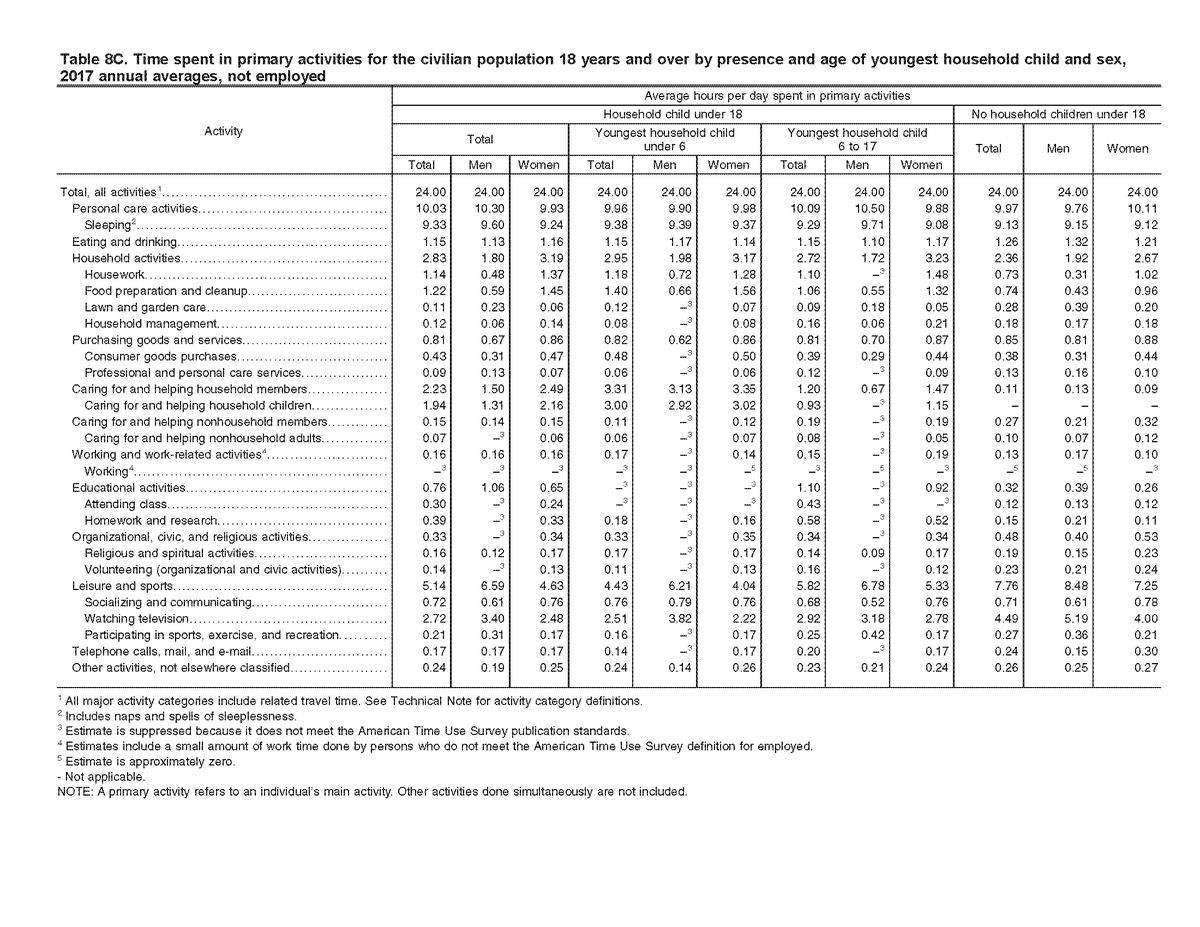
Household activities: 1.26 3.17
Caring for household: 1.42 3.36
Work-related activities: 6.57 0.00
==========
Total: 9.25 6.53
Women work more, huh?
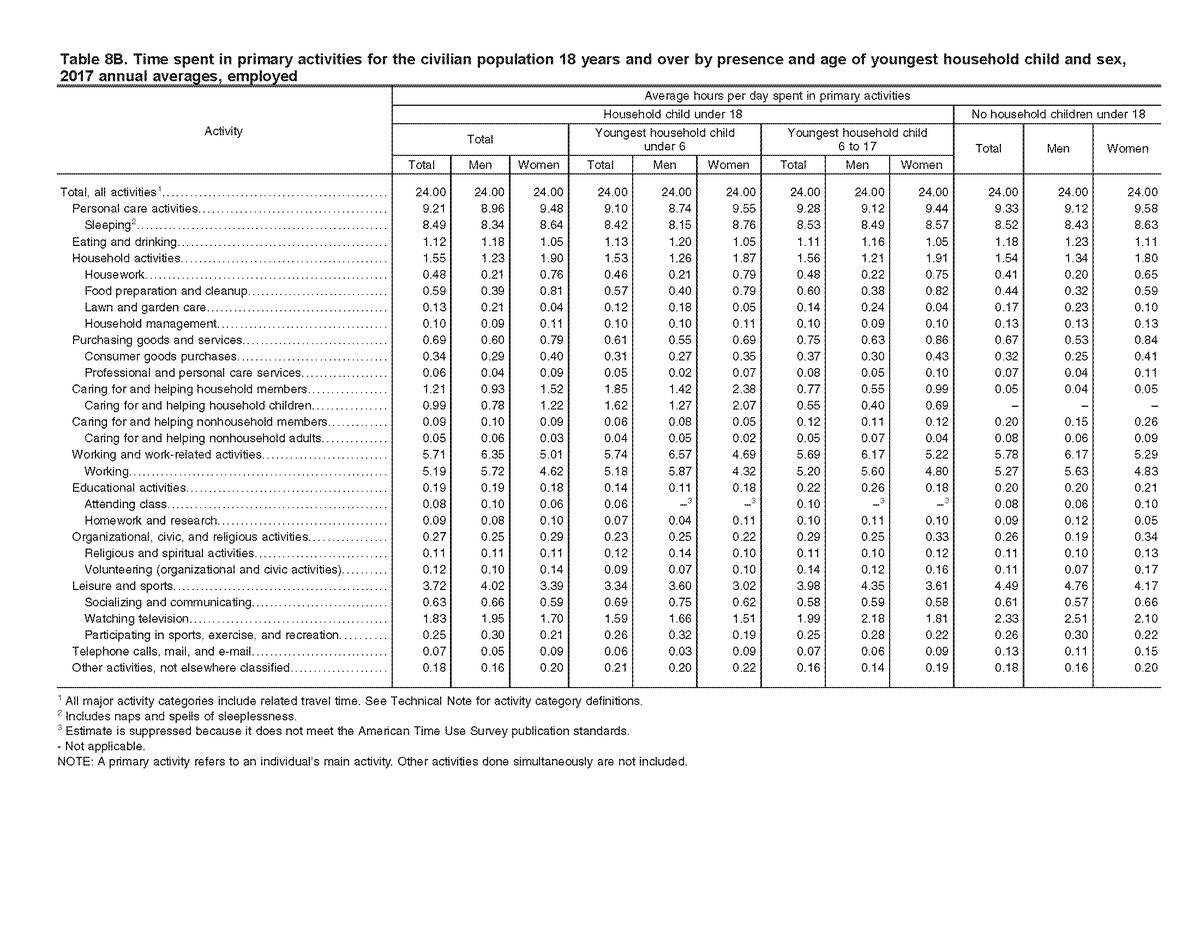
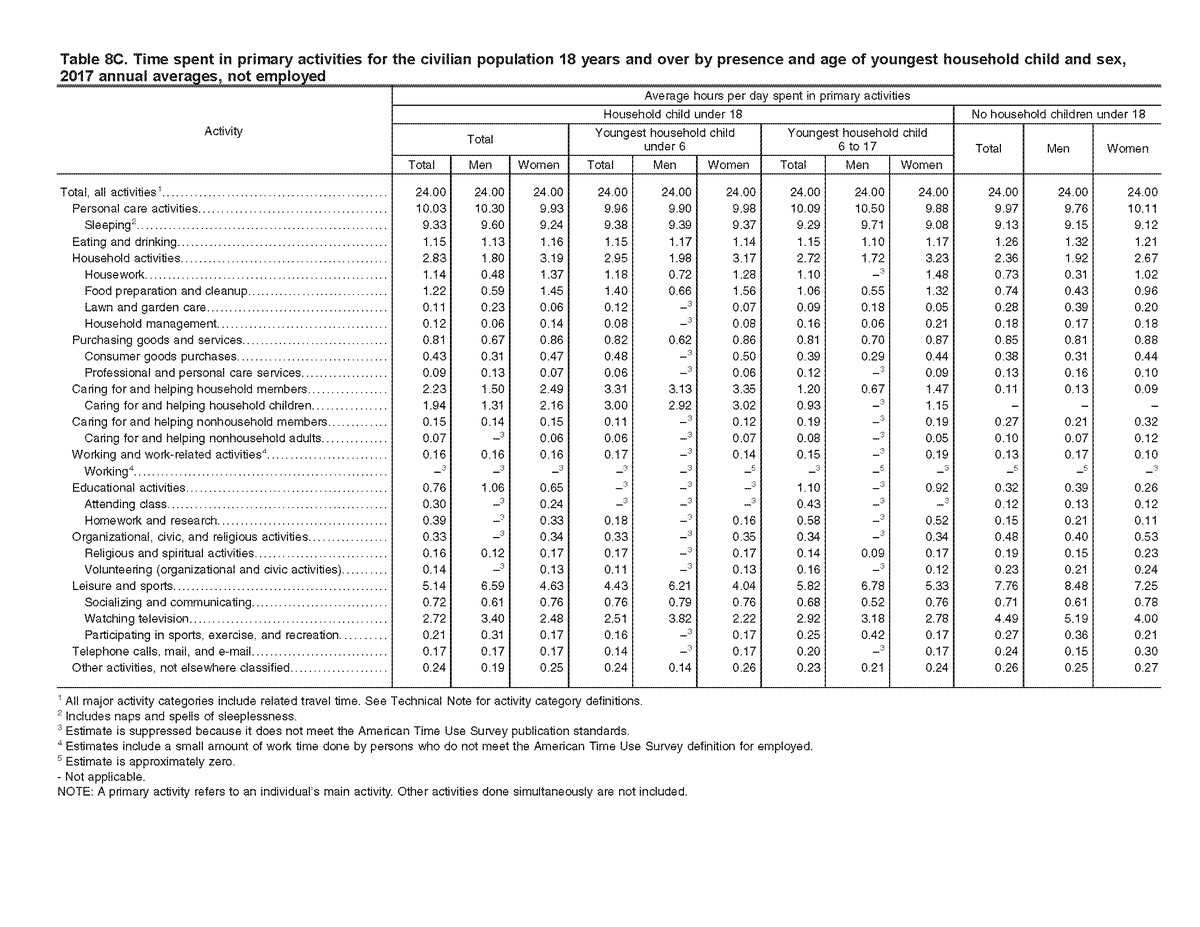
Women need to do better.
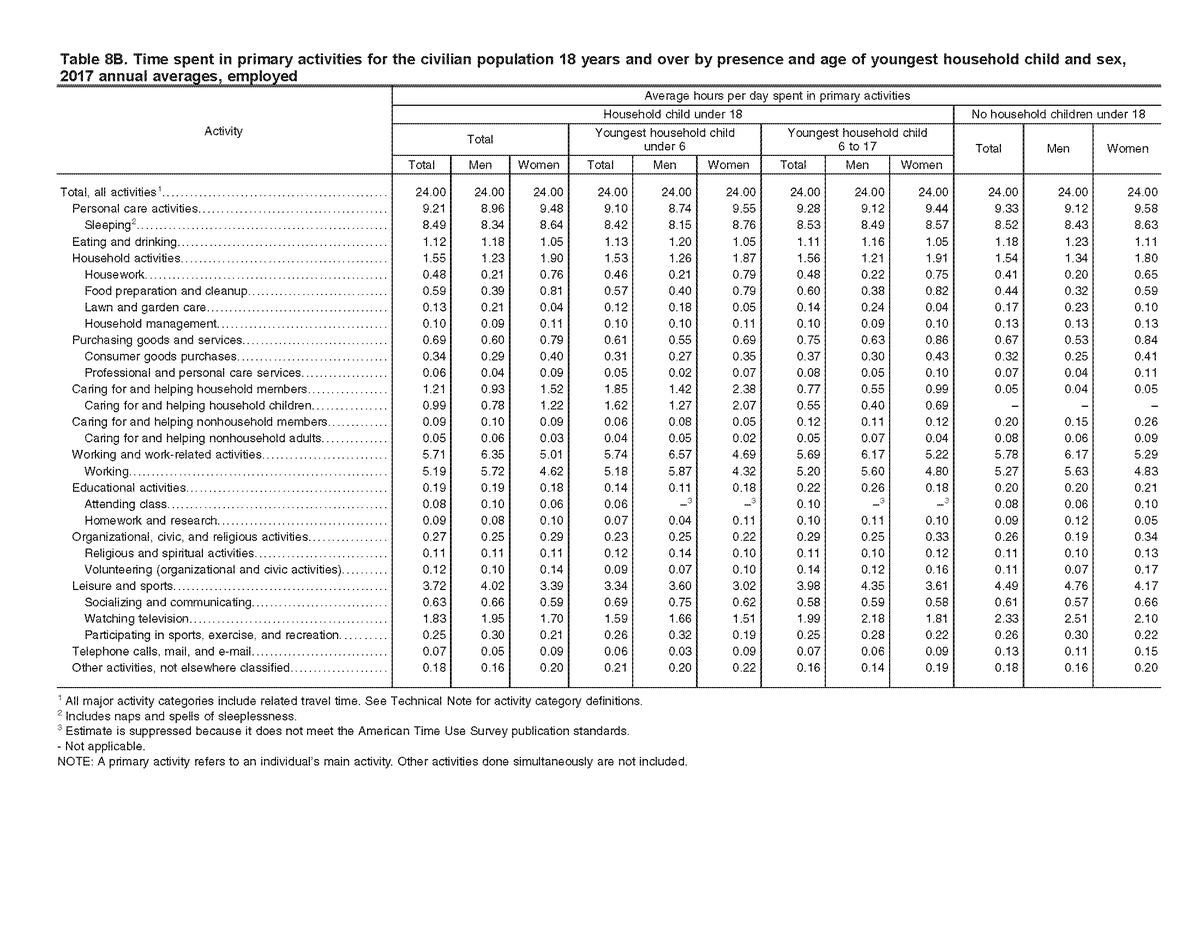
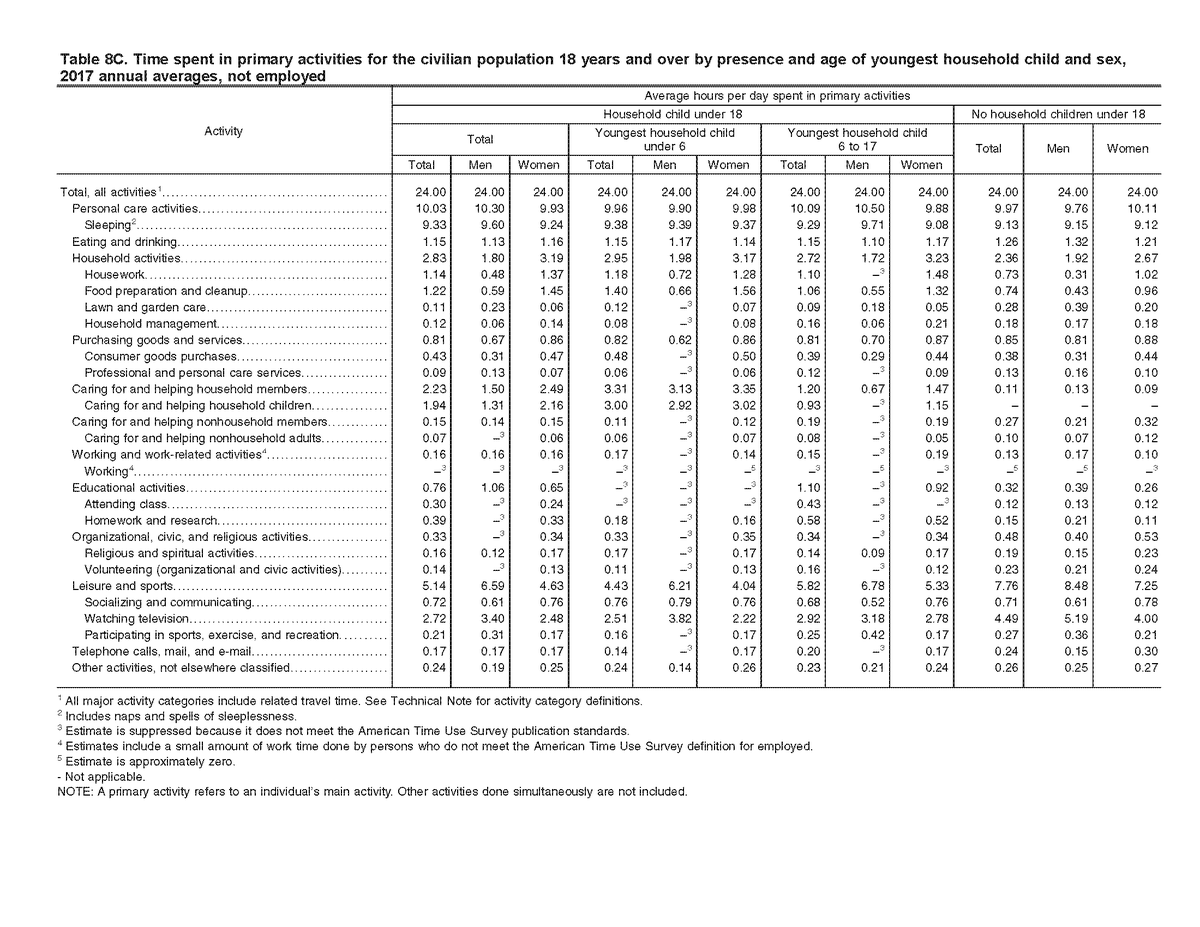
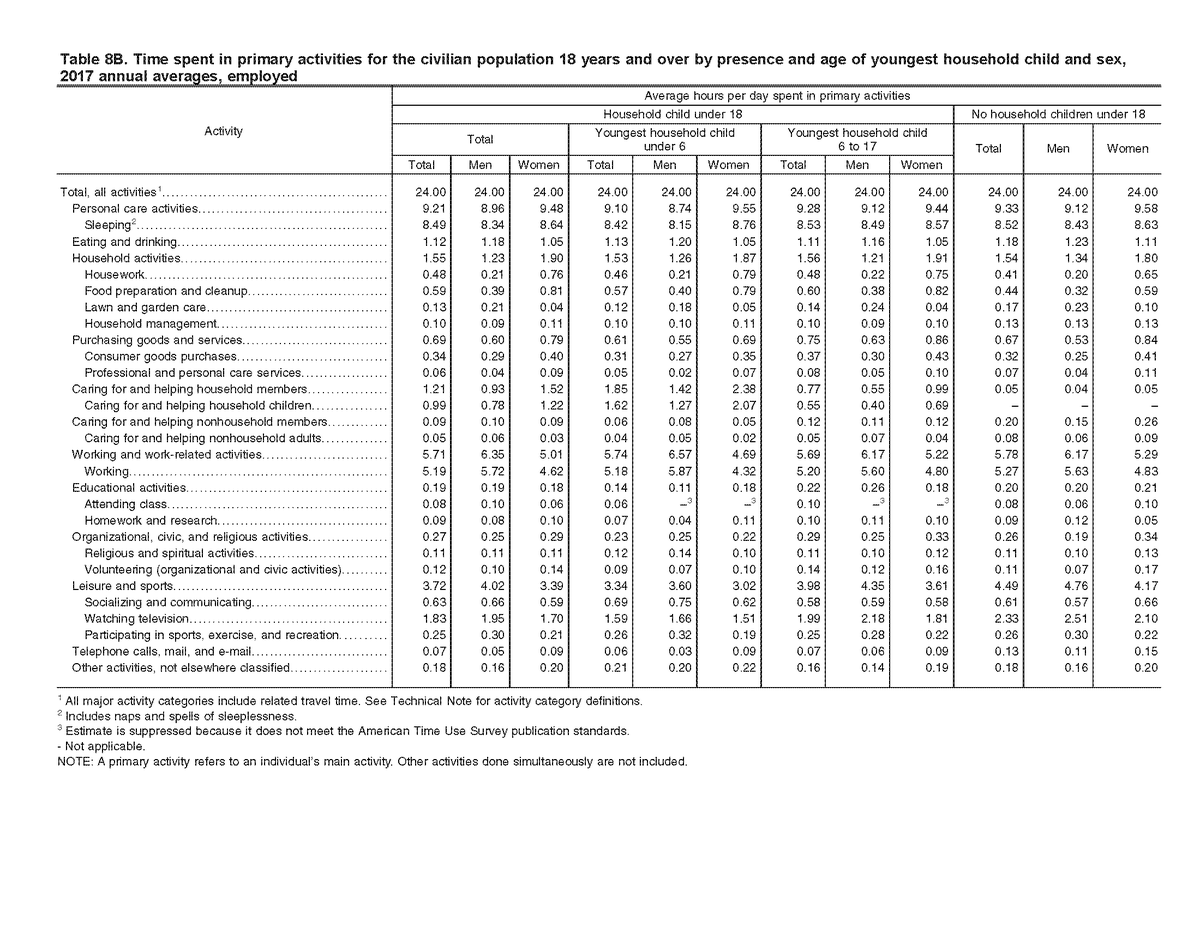
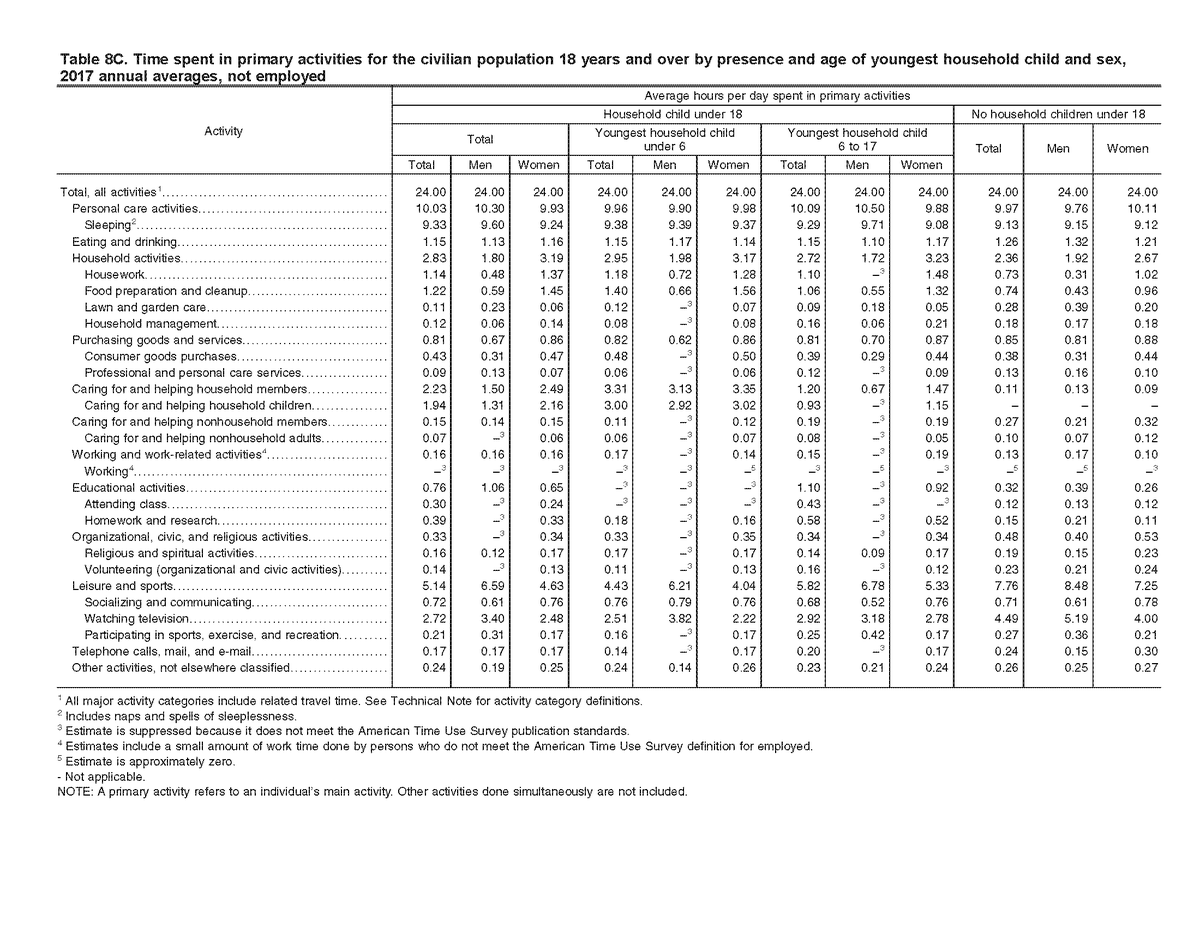
The American Time Use Survey does have an answer in Table 8B.
Let's check that out.
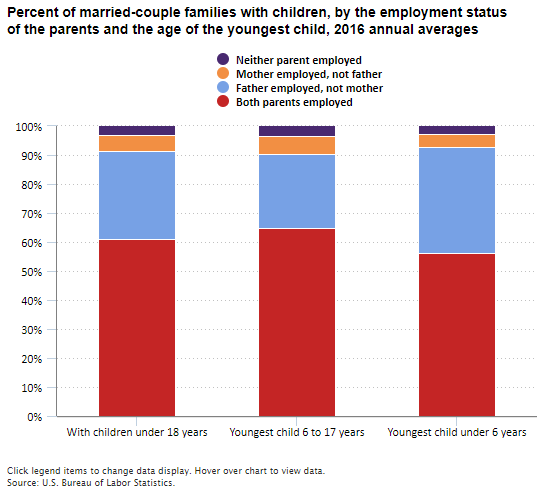
Table 8B, column 1: Men: Women:
Household activities: 1.23 1.90
Caring for household: 0.93 1.52
Work-related activities: 6.35 5.01
===========
Total: 8.51 8.43
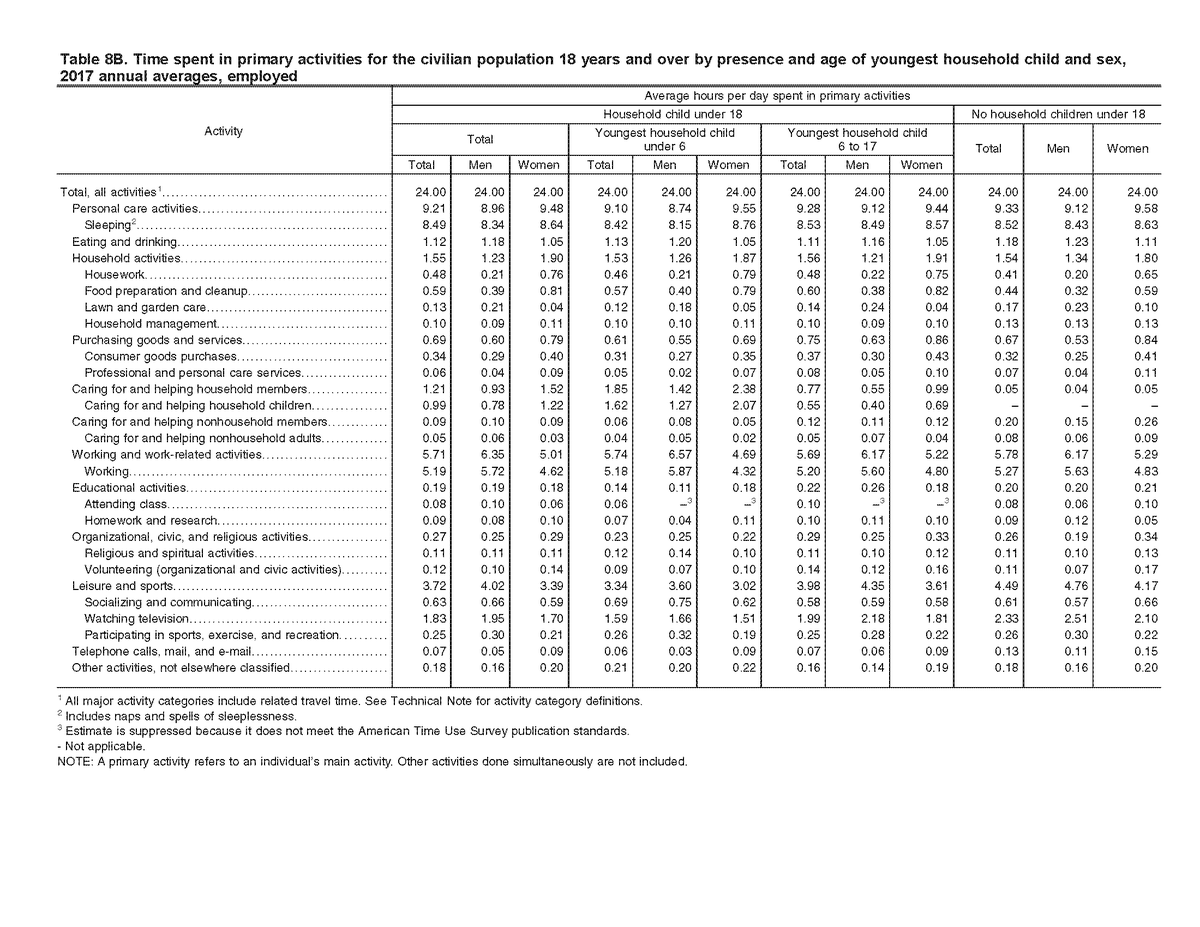
Table 8A, column 4: Men: Women:
Household activities: 1.54 2.21
Caring for household: 0.07 0.07
Work-related activities: 4.11 2.83
===========
Total: 5.72 5.11
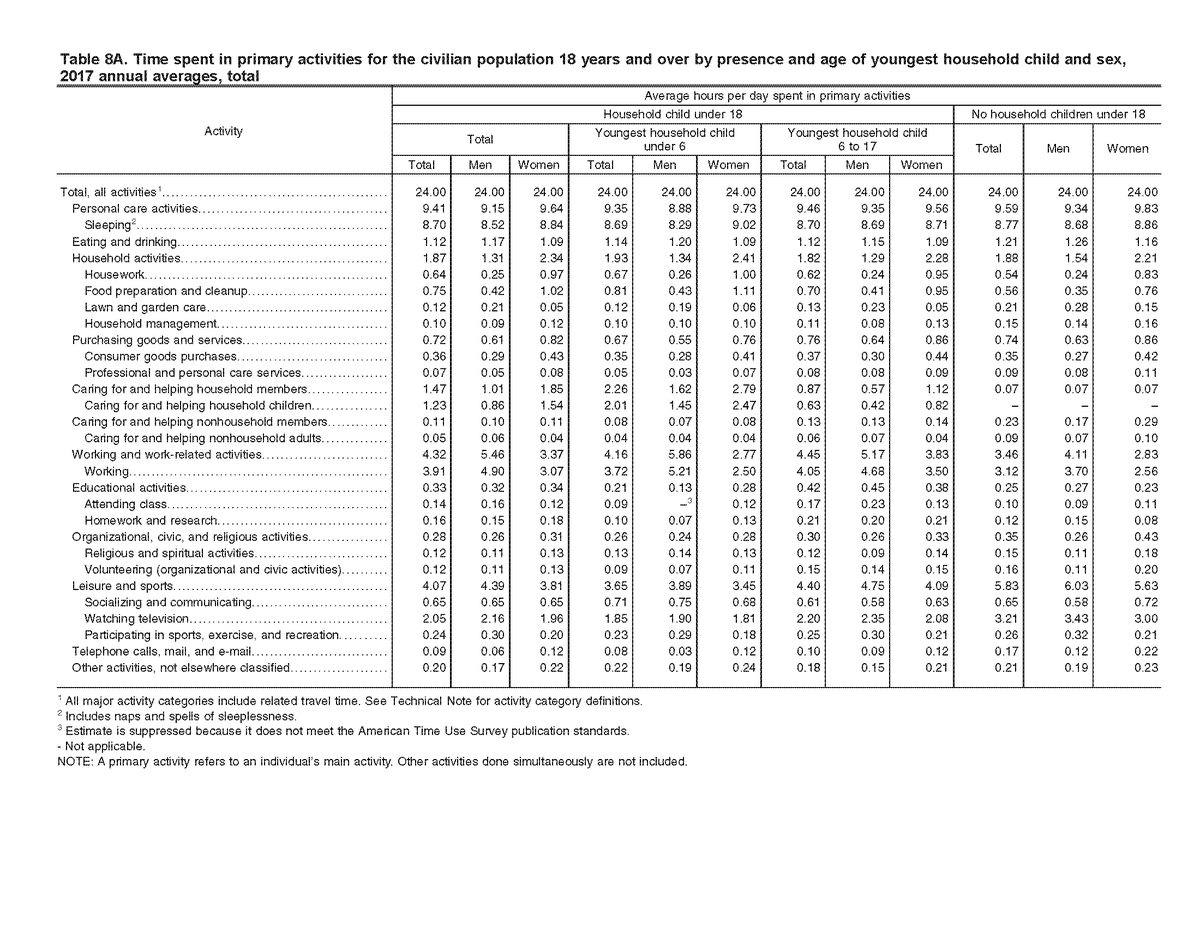
Table 8B, column 4: Men: Women:
Household activities: 1.34 1.80
Caring for household: 0.04 0.05
Work-related activities: 6.17 5.29
===========
Total: 7.55 7.14
